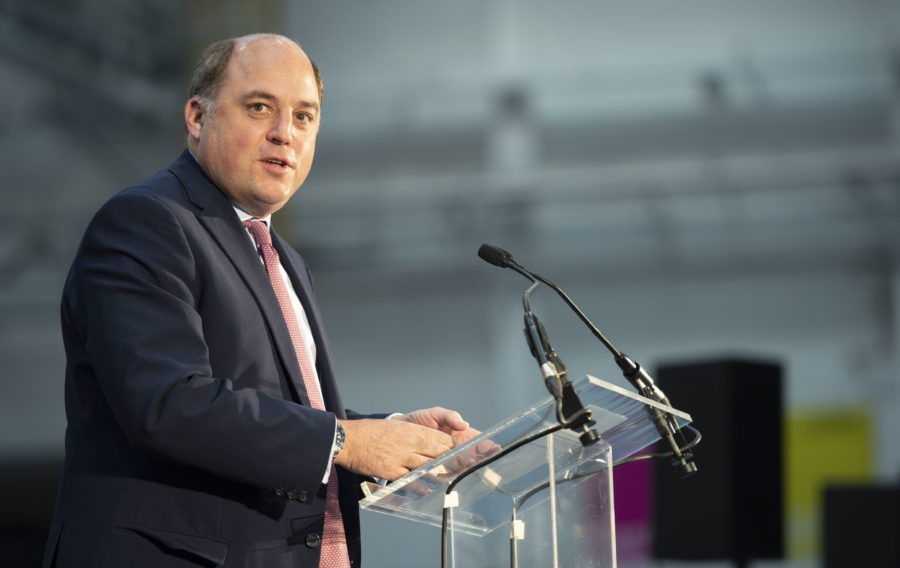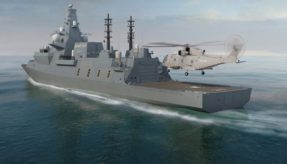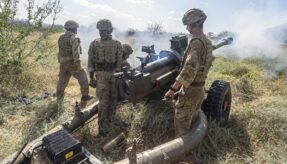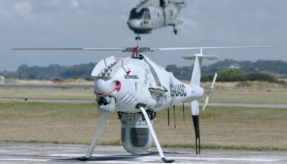
The Defence Secretary, Ben Wallace, has officially cut steel for the UK’s newest warship, during a ceremony held at Rosyth dockyard.
The event marks a significant milestone in the programme for the Royal Navy, Defence and shipbuilding in Scotland, with all five vessels to be built by Babcock on the Firth of the Forth and an average production cost of £250 million per vessel.
Deemed the lead programme of the National Shipbuilding Strategy, the construction of the fleet will support around 1,250 highly-skilled jobs at Babcock and see the creation of an additional 150 apprenticeships. A further 1,250 roles in the UK supply chain are also expected to be supported by the programme.
Shipbuilding Tsar and Defence Secretary Ben Wallace said: “Today is a momentous occasion for the Type 31 programme, Defence and the shipbuilding industry in Scotland. As Shipbuilding Tsar, to cut the steel for the first of five new frigates that will be constructed here on our shores in the Firth of the Forth, providing jobs and innovation to the are, is a tremendous honour.
“Equipped with the innovative technologies at the forefront of the Royal Navy’s future vision, the entire Type 31 fleet will be fitted with a range of capabilities allowing it to undertake a variety of operations at sea.”
The newest of the Royal Navy’s frigate fleet will undertake a variety of roles on operations including interception and disruption of illegal activity at sea, intelligence gathering, Defence engagement and providing humanitarian support.
The Type 31 will be equipped with innovative technology and will benefit from advanced capabilities fitted onboard, including MBDA’s Sea Ceptor, a supersonic anti-air missile defence system, as well as a 57mm and two 40mm Bofors naval guns, a 4D radar system and able to house a Royal Navy helicopter.
With agility and flexibility integral to its design, the Type 31 weapon systems will also be adapted throughout its lifespan to counter future threats and ensure each ship can be equipped to deliver a forward naval presence across the globe.
Known as the Inspiration class, the five Type 31 vessels all take their names from former warships and submarines whose missions and history are intended to inspire Royal Navy operations, as well as a representation of its future vision. The four remaining ships in the Class were recently announced as HMS Active, HMS Formidable, HMS Bulldog and HMS Campbeltown.
Minister for Defence Procurement, Jeremy Quin said: “Type 31, built at Rosyth and supporting over 2,000 jobs, is a hugely important future capability for the Royal Navy and represents a significant export opportunity to friends and allies overseas.”
As announced by the Prime Minister last November, Defence has received an increase in funding of over £24 billion across the next four years, enabling our Armed Forces to adapt to meet future threats of which the Type 31 will form a part. Enhanced by commitments outlined in the Defence Command Paper, the new frigates will form part of the Royal Navy Integrated Force 2030 vision and will replace the five general-purpose Type-23 frigates currently in service with the Royal Navy.
During his visit to the Rosyth dockyard, the Defence Secretary, accompanied by the Minister for Defence Procurement Jeremy Quin and Director General Ships Vice Admiral Chris Gardner of Defence Equipment and Support (DE&S), also unveiled a plaque to mark the formal commissioning of Babcock’s new Assembly Hall. As part of a wider £35 million site investment by Babcock, the state-of-the-art and digitised facility will be capable of housing two Type 31 vessels alongside each other during their build phase.
The entire Type 31 fleet is expected to be delivered by the end of 2028 and to enter service with the Royal Navy by the end of 2030, with the first expected in the water in 2023. The Type 31 will carry a crew of up to 105 that will be deployed on duties around the world, working alongside new Type-26 frigates. Its design is based on Babcock’s Arrowhead 140 which has already attracted international export opportunities. Babcock signed the first export contract with PT Pal of Indonesia, at this year’s DSEI and is also one of the bidders down selected to provide a potential design solution for the Polish Navy’s Miecznik (Swordfish) frigate programme.
The Type 31 is the first warship competition for over a decade, with the initial contract award by DE&S marking a significant achievement of meeting the challenges outlined by Sir John Parker in the National Ship Building Strategy, announced in September 2017.
image © Crown Copyright
If you would like to join our community and read more articles like this then please click here







